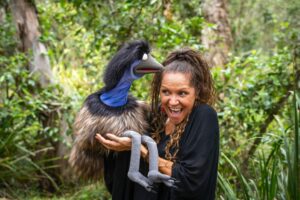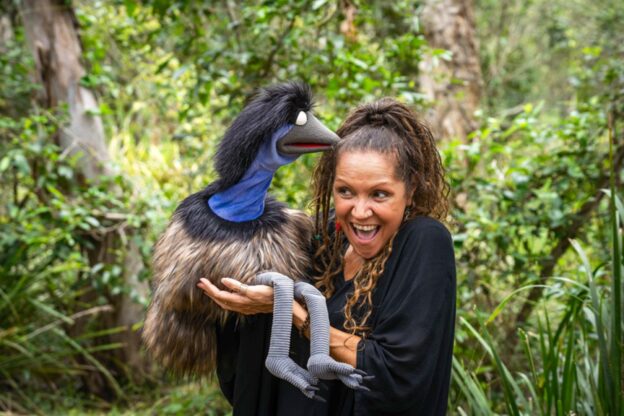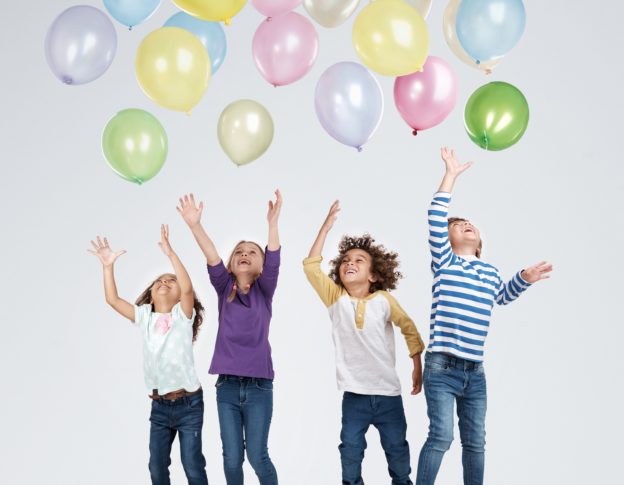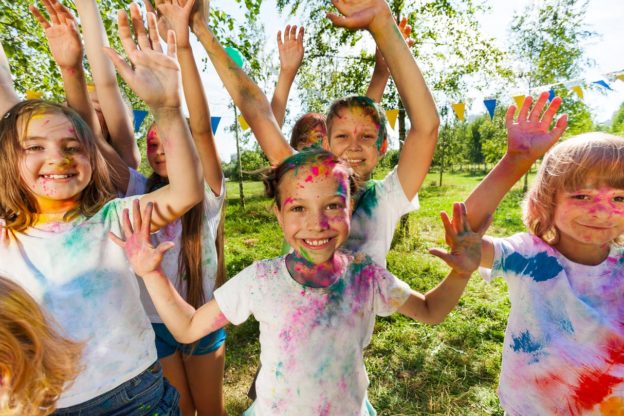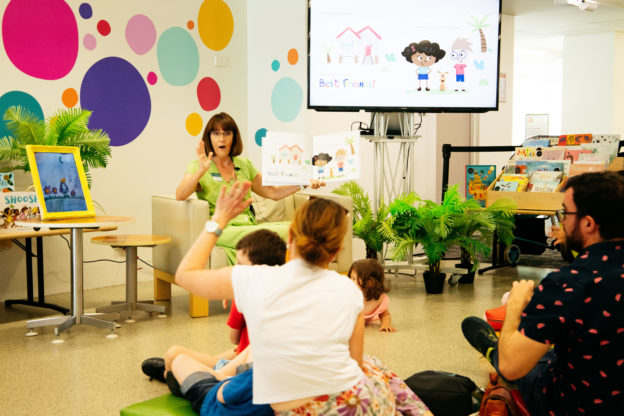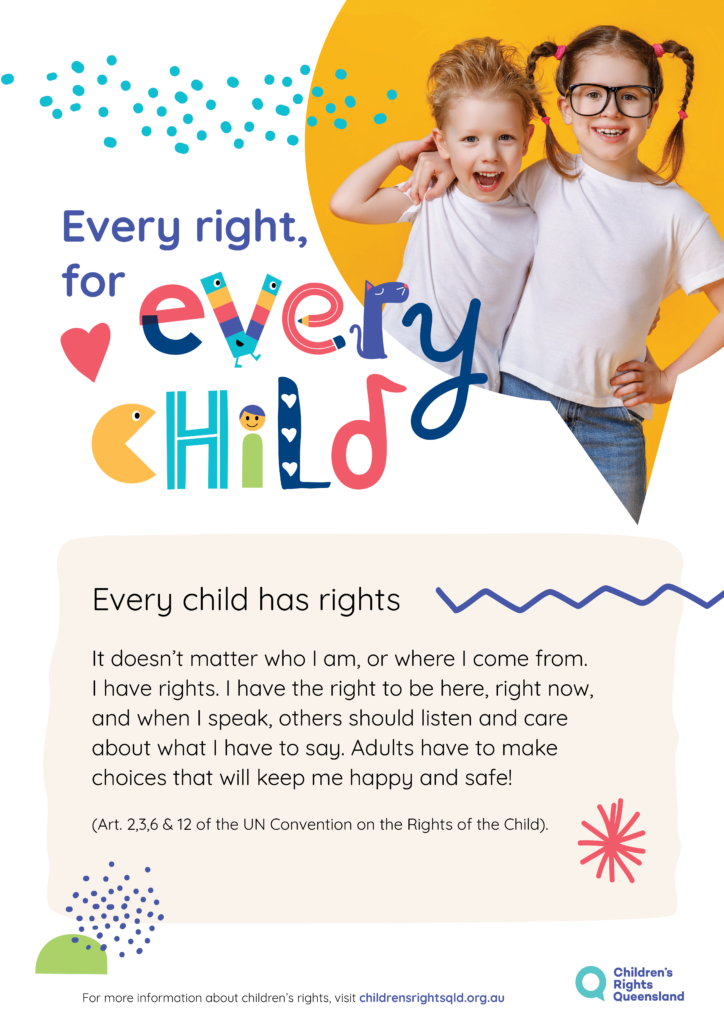Yarning with Aunty Sharron mirii Bell on the importance of music, culture and children’s rights
In a world where music touches lives in so many ways, one special song has captured the hearts of communities, parents, and educators alike. Created by the talented First Nations songwriter, Aunty Sharron mirii Bell, I Am Me is more than just a tune; it’s a powerful message for the rights of children and the uniqueness of every child. Developed in partnership with Children’s Rights Queensland, it’s a celebration of diversity, rights, and the importance of listening to our youngest voices.
The story of how this song came about is a testament to the dedication of Children’s Rights Queensland to making a difference and reaching new audiences to celebrate and promote children’s rights, as outlined in the United Nations Convention on the Rights of the Child (UNCRC). We recently sat down with Aunty Sharron to learn more about the impact of I Am Me and the wide-ranging impact it’s having on children, parents, carers and educators across Australia.
About Aunty Sharron mirii Bell
Aunty Sharron mirii Bell is a proud Wiradjuri Gamilaraay woman, who has dedicated her career to early childhood education, cultural education and well-being. Her storytelling, songwriting and performing career has seen her featured on Play School and in collaborations with local councils, festivals and cultural events. As a proud ambassador for Children’s Rights Queensland, she has been an impactful voice for the rights of children through her work.
“I don’t take it lightly that it’s a huge responsibility to be an educator… I just need to be with children constantly in my life and be able to stand up for their rights and really deeply listen to them.” Aunty Sharron mirii Bell
Coming Together for Children’s Rights
I am me, that’s my identity
Aunty Sharron tells how she was driving to work soon after being approached by Children’s Rights Queensland to make a song that celebrated children’s rights, and started singing the phrase, ‘I am me, that’s my identity’. From there, the song quickly came together and became the central affirmation and celebration of the gifts of every child that carries through the song.
Once the lyrics where in place, it was time to create the music video. From a vision of a video that showed children having fun, and singing along with the song, emerged the final product with nearly 90 children sharing in the video’s creation. Aunty Sharron tells of moments in the recording where older children hung back and didn’t want to join in initially, but then as they saw opportunities, they began to share their ideas and take ownership of the process. The final result is a chorus of individual voices joining together as one to share and celebrate their individual gifts. As each take was played back and reviewed, the children responded with laughter, surprise, and joy in discovering their voices which created moments of pure magic, highlighting the project’s impact on their self-esteem and confidence.
The ‘I Am Me’ music video
The Heart and Soul Behind ‘I Am Me’
Aunty Sharron’s journey with ‘I Am Me’ reflects not only her passion for children’s rights but also her deep connection to her First Nations heritage. The song is infused with the values and stories of the Wiradjuri and Gamilaraay cultures, which she carries with pride into every aspect of her work.
“We are inspiration for our children. And it’s so important to be who we are so they can be who they need to be.” Aunty Sharron mirii Bell
First Nations Peoples boast a rich and proud culture of storytelling through song, with traditional songs, stories and lessons passed down through generations. As each new generation grows, they are encouraged to embrace their roles as storytellers and song-sharers, bringing their own tales and experiences to the stories as they weave a rich tapestry that links across generations. ‘I Am Me’ draws on this important tradition – bringing together children of a generation that will remember and share their roles in shaping this song that adds so much value to the community.
“For me as a First Nations woman, we have our traditional songs… we’re still here. We’re still alive. We still get to create those songs. The song was a way to bring together my love for education, culture, and the well-being of our children,” Aunty Sharron explains. “It’s about giving kids a voice, letting them know they’re heard, and that they truly belong.”
Creating ‘I Am Me’ was a collaborative effort from the start. In partnership with Children’s Rights Queensland, Aunty Sharron involved local communities, schools, and families to ensure that the song resonated with a broad audience. “We wanted every child to see a part of themselves in the song and feel proud of who they are, no matter where they come from.”
As the project gained momentum, it became clear that ‘I Am Me’ was more than a song; it was a movement. Schools across Australia began incorporating the song into their curriculum, using it as a springboard to discuss identity, culture, and rights. Educators have praised the song for its ability to engage children in meaningful conversations about diversity and acceptance.
“The feedback has been overwhelming,” says Aunty Sharron. “To hear teachers and parents tell me how the song has opened up new dialogues, brought comfort, and even joy to their children—it’s more than I could have ever hoped for.”
This inclusive and respectful approach to children’s participation in art and storytelling does more than just create a song or a video. It lays the groundwork for a deeper understanding of rights, identity, and community. It shows that when children are given the space to express themselves and are listened to, they not only contribute to the creation of something beautiful but also embark on a journey of self-discovery and empowerment.
“When children can relate to music… there’s so many beautiful things that music can do.” Aunty Sharron mirii Bell
Next Steps and Future Dreams
As ‘I Am Me’ continues to inspire children and adults alike, Aunty Sharron looks forward to expanding its impact. In September 2024, a sing along book was launched to complement the song’s themes, providing another layer of engagement through beautifully illustrated stories that capture the song’s spirit.
“Through the book, we can explore these themes even deeper, helping children to understand and appreciate their rights and the beauty of their own stories,” she shares excitedly. Plans are also in place to develop educational workshops and interactive sessions that bring the messages of ‘I Am Me’ to life in classrooms and community centres.
Aunty Sharron remains hopeful about the future: “This is just the beginning. We have a chance to make a real difference in the lives of our children, and I am committed to seeing this through, for them and with them.“
Join the Movement: How You Can Support ‘I Am Me’
The journey of ‘I Am Me’ is just beginning, and you can be a part of its inspiring story. Here’s how you can get involved and help spread its powerful message:
-
- Listen and Share: Start by listening to ‘I Am Me’ with your family, friends, and community. Share it on social media, in classrooms, and at community events to help amplify its message of diversity and acceptance.
-
- Order the Book: The storybook, designed to complement the themes of the song, is a wonderful resource for teaching children about identity and rights. Order a copy for your home, school, or local library to ensure it reaches as many young readers as possible. Click here to place an order!
-
- Participate in Workshops: Keep an eye out for workshops and interactive sessions led by Aunty Sharron and her team. These events are great opportunities for children and adults alike to delve deeper into the song’s themes and learn how to apply them in everyday life.
By supporting Children’s Rights Queensland you’re helping to foster a community that values every child’s voice and story. Let’s continue to build this movement together, for a future where every child knows they belong and their rights are celebrated.


